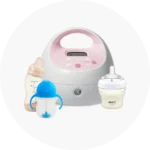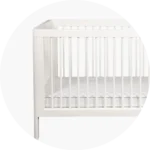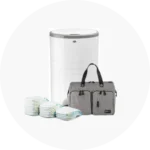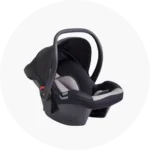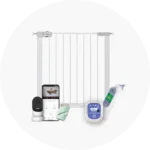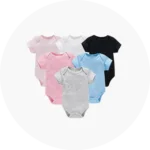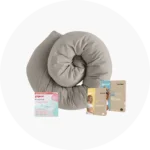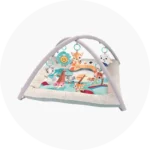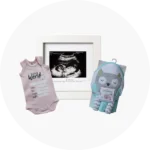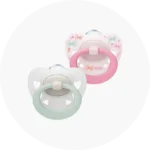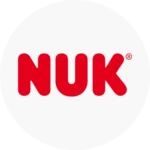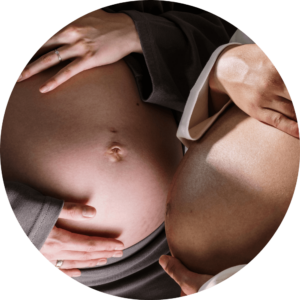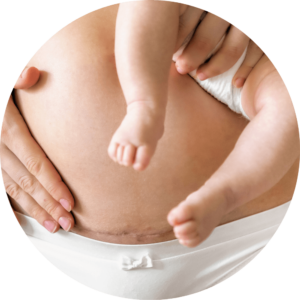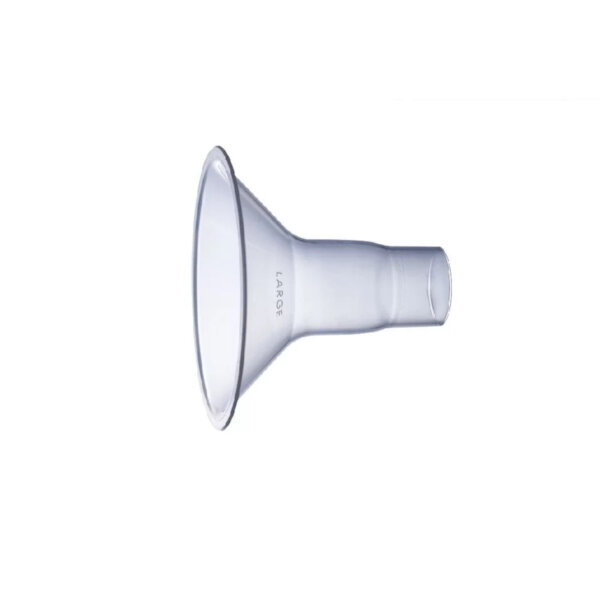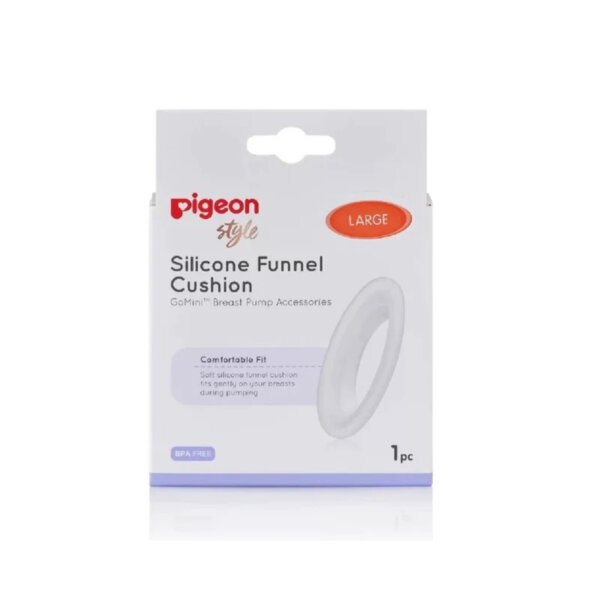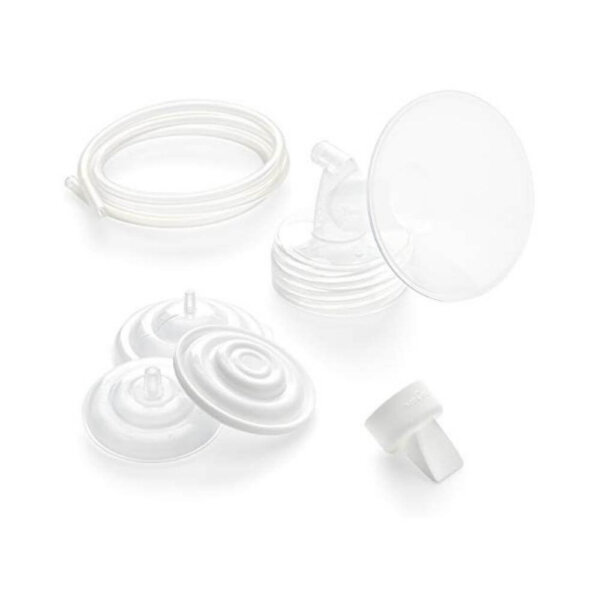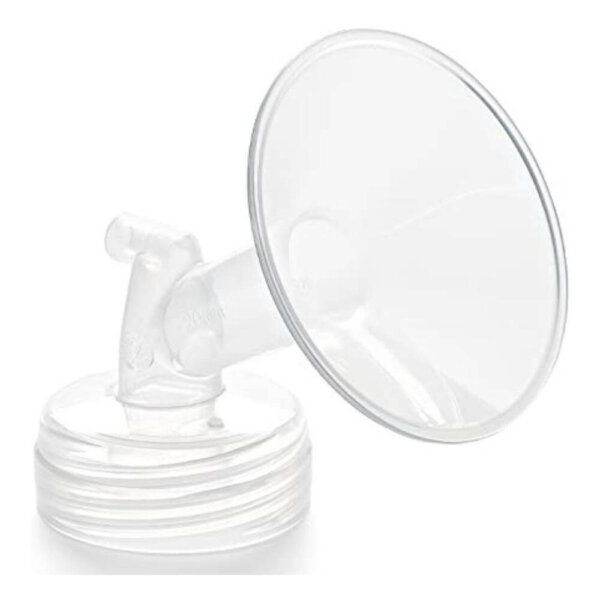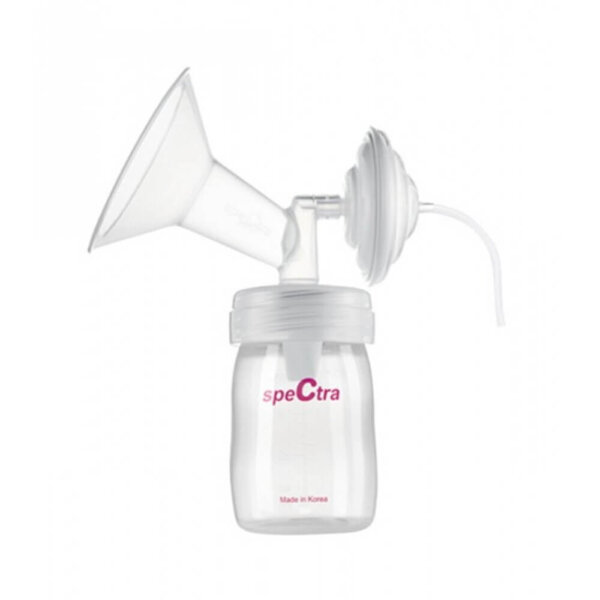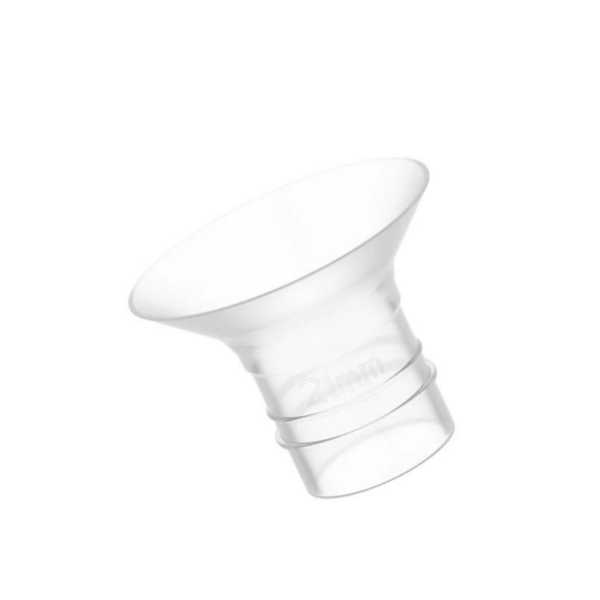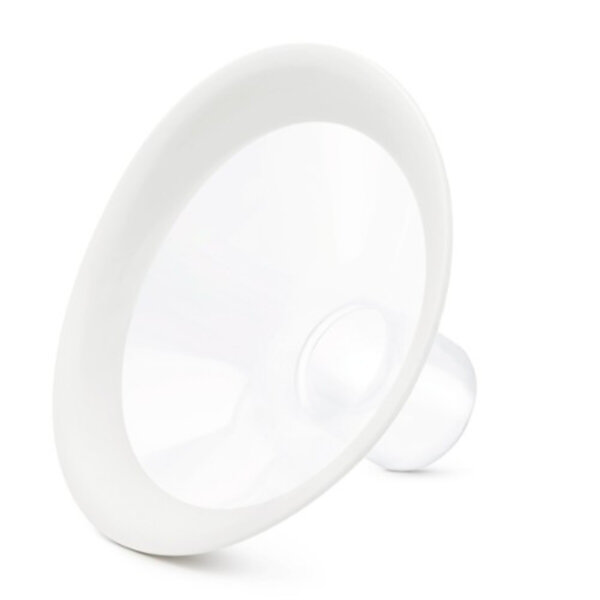The Ultimate Guide to Breast Flange Sizing: Finding Your Perfect Fit
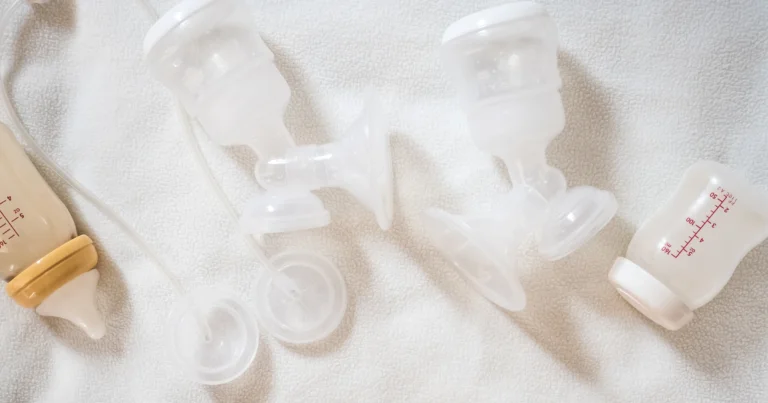

Table of Contents
What is a Breast Pump Flange ?
A breast pump flange, or breast shield, is a funnel-shaped piece of plastic that fits over your nipple. It creates a vacuum seal around your areola, drawing your nipple into the funnel to extract milk. The size refers to the diameter of the small opening at the flange’s narrow end.
Why Is Getting the Right Size Flange So Important?
Using the correct size breast flange is key to making your pumping experience both comfortable and effective. The right fit means you’ll be able to pump more milk with less effort, which is essential for maintaining a good milk supply. If the flange is too small, it can compress your breast tissue, potentially causing clogged milk ducts that slow down milk flow and can lead to painful issues like mastitis.
On the other hand, if the flange is too large, it won’t remove all the milk efficiently, which can reduce your milk supply over time. An ill-fitting flange can also cause unnecessary nipple pain or even injury, making the whole process more painful than it needs to be.
Pumping shouldn’t hurt, and if it does, you’re less likely to stick with it, which can be discouraging. Choosing the right flange size, which might even be different for each breast, helps ensure you’re draining your milk thoroughly and keeping your supply strong. Plus, it prevents complications like clogged ducts and engorgement, setting you up for a smoother, more successful pumping journey.
How to Find The Right Flange Size ?
To find your correct flange size, start by measuring your nipple alone, focusing on the base to get the most accurate measurement possible. Keep in mind that every brand and every body is different, so you might need to experiment a bit to find the perfect fit.
Your nipple size can change throughout your pregnancy and breastfeeding journey, so the ideal time to measure is between 36-38 weeks of pregnancy or around 10-14 days postpartum, once your milk has fully come in and your nipples have adjusted to your new feeding routine.
We also recommend remeasuring during your breastfeeding journey, as your nipple size may change. It’s best to measure after a feeding/pumping session, so that any engorgement doesn’t overestimate the size.
Don’t forget to measure both sides, as your nipples might not be identical—remember, they’re sisters, not twins!
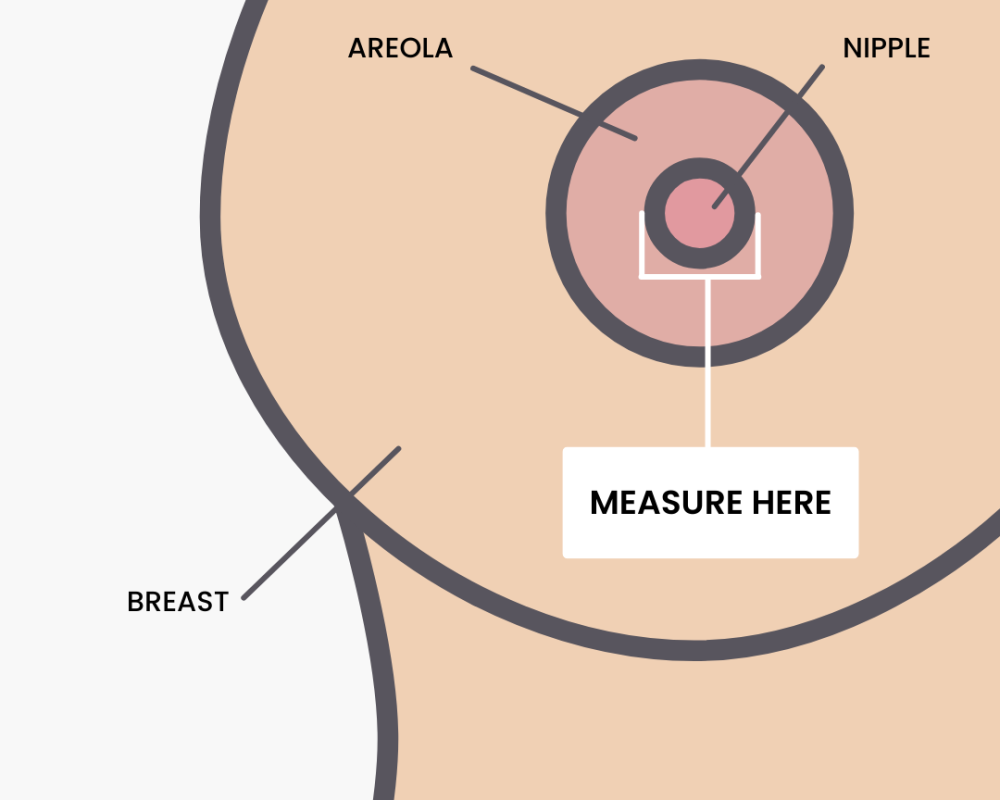
Method 1 - The Ruler Method
To measure your nipple diameter (its width), you’ll need a ruler or measuring tape. You can also use some sticky post-it notes to ensure your measurement is as accurate as possible.
Before measuring, gently stimulate your nipple by rolling it between your thumb and finger or applying a bit of ice to ensure it’s at its full size. Start by sticking a post-it note where the ruler or measuring tape shows 0.
Hold the ruler at the base of your nipple and place a second post-it note where the edge of your nipple meets the base. Be sure to measure the nipple at its base and not the areola. Repeat on the other side.
Once you’ve got your nipple size, choose a breast flange that is slightly larger than your nipple (2-3mm).
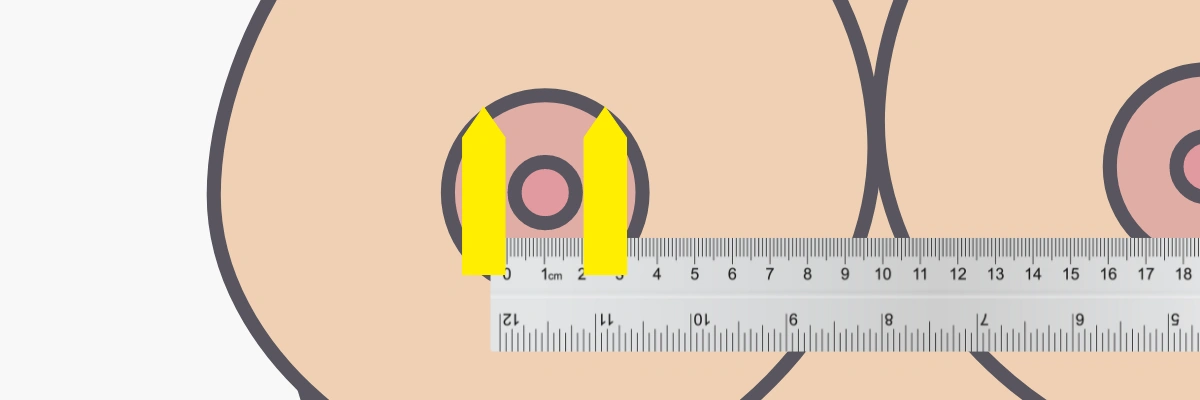
Method 2 - The Coin Method
Use coins to help you estimate your nipple size. If you’re between sizes, round up and choose the nearest available size that’s slightly larger. Importantly, this is only an estimate, we do recommend measuring with a ruler or soft tape measure to ensure you use the best fitting flanges.

How do I know if I've got the right fit?
Too Large
If your breast flange is too large, you might notice the following signs:
- Too Much Areola Pulling Into the Tunnel: A large amount of your areola (more than a small portion) is being pulled into the tunnel during pumping.
- Nipple and Areola Pain: You may experience pain in your nipples and the surrounding areola, possibly accompanied by redness or bruising.
- Inefficient Milk Expression: You might not be able to fully empty your breasts, leading to reduced milk output and potential engorgement.
- Air Leaks: You may notice air leaking around the flange, causing a loss of suction.
- Breast Tissue Discomfort: The flange may cause discomfort as it pulls in more breast tissue than necessary, leading to a less effective pumping session.
- Frequent Adjustments: You find yourself constantly adjusting the flange to try to improve suction or comfort.
- Slipping or Movement: The flange may not stay securely in place, slipping around during pumping.
Too Small
If your breast flange is too small, you might notice the following signs:
- Nipple Pain or Discomfort: Your nipples may feel sore, pinched, or experience pain during or after pumping.
- Rubbing or Chafing: The nipple may rub against the sides of the flange tunnel, causing redness, irritation, or even skin damage.
- Blanching or Whitening of the Nipple: After pumping, your nipples might appear white or pale due to restricted blood flow.
- Low Milk Output: You may notice that you’re not expressing as much milk as usual because the flange isn’t allowing the breast tissue to be fully stimulated.
- Nipple Trauma: You could develop cracks, blisters, or other signs of nipple damage.
- Breast Engorgement: If the flange is too small, it may not effectively empty your breasts, leading to engorgement or clogged ducts.
Perfect Fit
Use the “COMFY” test!
- Center: Your nipple should move freely in and out of the tunnel without touching the sides, causing redness, or pain. If your nipples do touch the sides it should be painless.
- Only: Only a small amount of areola tissue should be pulled into the tunnel during each pump cycle—not too much and not too little.
- Motion: Your breasts should move back and forth with each pump cycle in a gentle and rhythmic manner.
- Feel: Pumping should be comfortable, without causing any pain or tenderness.
- Yield: Your pump should effectively drain your breasts, leaving them noticeably softer and lighter after your session, which is crucial for maintaining milk production.
Can I customise the flange size on my wearable pump or hands-free collection cups?
Wearable pumps are typically designed in one or two flange sizes. Depending on the brand, you can customise your breast shield using small, flexible silicone inserts. These inserts can also be used to adjust the size of the standard breast shields that come with your pump. Before purchasing any inserts, please chat with us to ensure they are compatible with your pump.
GOOD TO KNOW
Breast shield or flange inserts are a great investment because they allow you to convert the size of the standard flanges that come with your pump, ensuring a better fit. They are also compatible with most hands-free collection cups or wearable pumps, making them versatile and convenient for different pumping needs.
Breast Flange FAQ
Are a breast flange and brest sheild the same thing
Yes! A breast shield and a flange refer to the same part of a breast pump. Depending on the brand, it might be called a “flange” or a “breast shield,” but they both serve the same function in the pumping process.
How does nipple elasticity affect the fit of the flange during pumping?
Nipple size isn’t the only factor to consider when pumping. As your pump works, your nipples will be pulled into the flange. Ideally, they shouldn’t stretch more than halfway down the flange. If they extend much further—reaching the backflow protector or the end of the flange—and you’re experiencing pain or low milk output, it’s time to troubleshoot. However, nipple elasticity alone isn’t a concern.
To troubleshoot, try lowering the vacuum strength, double-check your flange size, or try lubricating with coconut oil before pumping. If you’re still unsure, consult a lactation consultant.
But if you’ve tried everything—using the correct size, low suction, and your nipples still stretch beyond halfway without any pain—then you’re doing great, mama! Keep pumping; your body is functioning just as it should.
How can I reduce discomfort when begining a pumping session?
To help decrease discomfort and encourage more of your breast to enter the flange, you can rub a little coconut oil, nipple cream, or fatty breastmilk in and around the tube. This should help with any pain or soreness from a dry, hard piece of plastic being pressed up against you!
What should I do if I can't find the right size?
Not finding the right size? Try these Breast Shield Inserts that work with a variety of different hard-shell breast shields and wearable pumps
Our Guidance Pledge
We’re dedicated to providing you with practical, evidence-based information to help you make the best choices for your growing family. All content is medically reviewed by our in-house doctor and/or experts such as OB-GYNs, doulas, and midwives, and is based on the latest international guidelines, peer-reviewed studies, and reputable sources from academic institutions and medical journals. Learn More
Sources
- Sauls, J. (2008). Potential benefits of breastfeeding for mothers: A review of the literature. Journal of Neonatal Nursing, 14(6), 188-192. https://doi.org/10.1016/j.jnn.2008.07.011
- Georgakopoulos, A. (2022, March 31). Why the best breast pump flange size is important. Motif Medical. https://motifmedical.com/blog/why-the-best-breast-pump-flange-size-is-important
- Choosing a breast pump. (2018).
https://www.fda.gov/medical-devices/breast-pumps/choosing-breast-pump - Maximizing milk production with hands-on pumping. (2017).
http://med.stanford.edu/newborns/professional-education/breastfeeding/maximizing-milk-production.html
